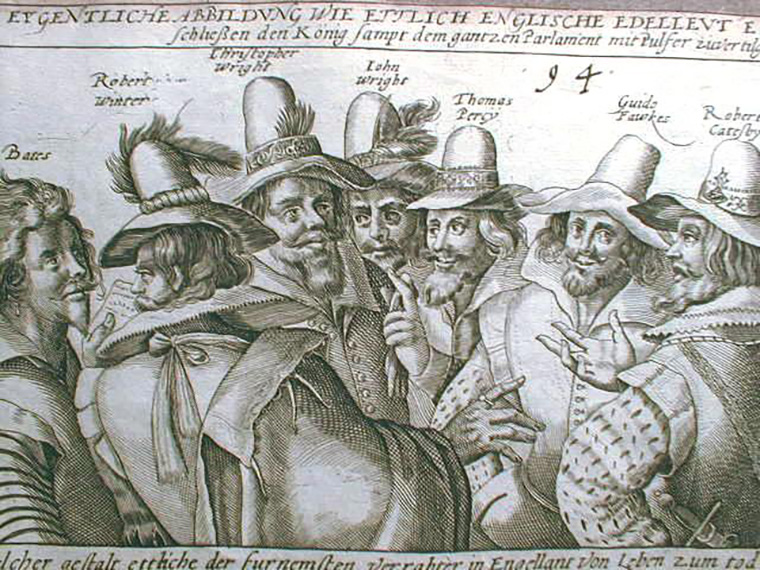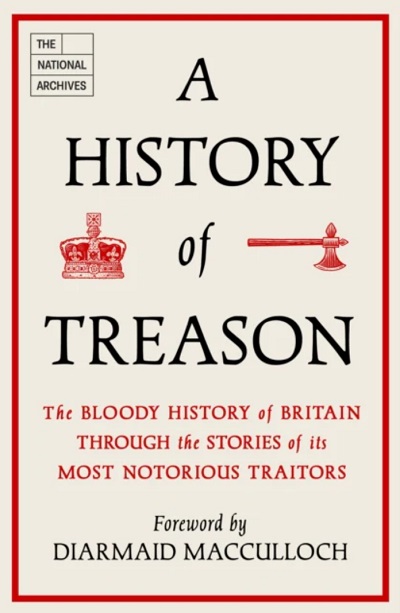The Act of Treason was first written into English law by Parliament in 1352, distinguishing between high treason, a crime against the crown, or petty treason, being disloyal to a subject. High treason was regarded as the most serious of all, particularly if you violated your majesty’s wife, the sovereign’s daughter, or the wife of the heir to the throne. You were also guilty if you waged war against the king or aided the enemy. The crime carried the death penalty: execution by hanging or beheading.

Charges of ‘treason’ were a powerful tool used and weaponised by some of England’s monarchs, particularly Henry VIII, who reigned over England from 1509 to 1547. Not only did he make radical changes to the English constitution, but he also expanded royal power by using charges of treason and heresy over his objectors. Those accused were often executed without formal trial by means of ‘bills of attainder’.
His second wife, Anne Boleyn, was no exception to Henry’s rule of power either. Anne, who had once been worshipped and adored by Henry, found herself in a troubled relationship with the king, and although she had produced a daughter, Elizabeth, the need for Henry to have a son was paramount.
Tragically, for Henry to move on Anne had to go and for that reason only, she was found guilty of treason on charges of adultery, incest and plotting the king’s death. To understand her fateful journey, The Final Year of Queen Anne Boleyn tells the story of the fall of one of England’s most famous queen consorts in her last days. It also dispels some of the myths and legends surrounding her fate, and provides a vivid and engaging account of the triumphant and harrowing final 12 months of Anne’s life. In this emotional account the author paints a very human portrait of a brilliant, passionate and complex woman.
When King Henry VIII declared himself ‘Supreme Head of the Church of England’, severing ties with the Catholic Church, he divided the nation and created an extension to what was considered ‘treason’, setting precedents and imposing violent new views on ‘treason’ in the name of faith. Rival dynasties and violent civil war saw treason continually being reshaped through power and fear, and in Stuart England it was no different.
In 1605 a group of zealous Roman Catholics, who were enraged at King James I for refusing to grant greater religious tolerance to Catholics, planned to blow up the Houses of Parliament. The Gunpowder Plot, led by Robert Catesby, was intended to kill the king and members of Parliament in order to clear the way to re-establishing Catholic rule in England. However, the plan failed when the conspirators were betrayed and all were either killed resisting capture or, like Fawkes, were tried, convicted and most publicly executed.
In James Travers’ new book, the story of The Gunpowder Plot is told through original dialogue, recorded at the time and drawn from first-hand original sources (which you can find at The National Archives and elsewhere). The book also includes material from the official investigation and new evidence relating to the torture of Guy Fawkes. More importantly, it shows the motivations of the principal figures involved, both officers of the state and the plotters themselves.
To coincide with our Treason exhibition, The National Archives has put together a collection of stories of some of the most notorious traitors in British history from 1352 to 1946. Written by expert historians at The National Archives and using original documents researched by our record specialists, A History of Treason details the British history of high treason and deception. Illustrated with images from The National Archives, it covers many stories that explore the nature of treason and how the crown and state reacted to it – from the introduction of the Treason Act in 1352 right through to the 20th century.
Among the stories are the trial and execution of Anne Boleyn, the Gunpowder Plot and the revolution plotted in the Cato Street conspiracy, the evidence brought against Sir Roger Casement, and the trial and execution of William Joyce who, as ‘Lord Haw-Haw’, broadcast Nazi propaganda from Berlin during the Second World War.
The Treason Act has been revised and supplemented time and again over the last 670 years, but despite these changes, the core elements of the 1352 Treason Act remain in law today. Modern legislation, including the 1989 Official Secrets Act and the 2000 Terrorism Act, has taken the place of the Treason Act since it was last tested in court in 1946 in the last treason trial of William Joyce, who was executed by hanging in 1946. Today the punishment for breaking the Crime and Disorder Act 1998 for an act of treason is life imprisonment.



Is it true that politicians and senior civil servants cannot be charged with treason?